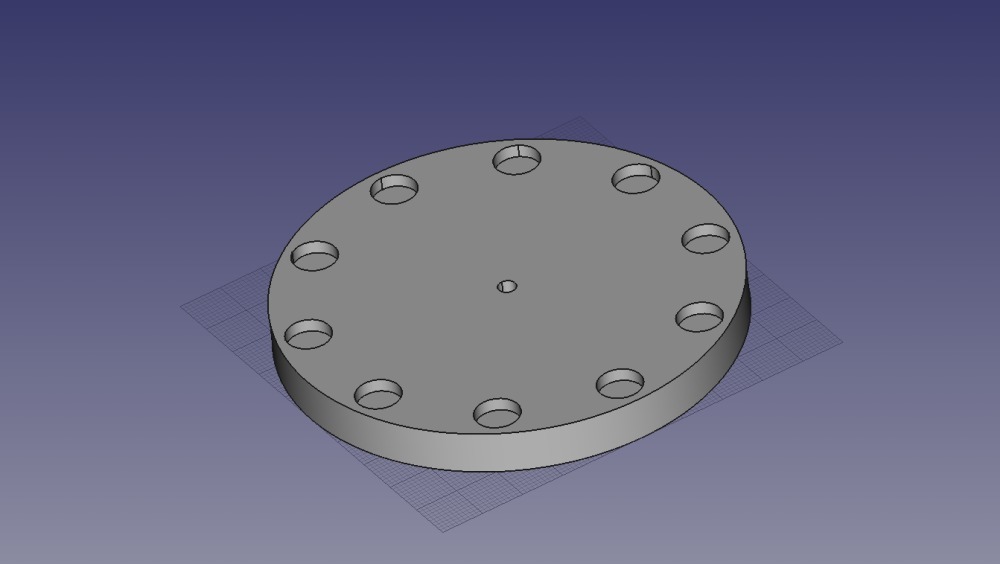
Generator / motor disc/rotor to experiment with
thingiverse
You have ten holes for magnets, each accommodating one or two, or all ten. These can be up to 1 cm in diameter and between 1 mm and 4 mm thick. If the diameter is less than 1 cm, you will lose the interference fit, requiring adhesive assistance. This disc-rotor is 1 cm thick, so I recommend no more than 50% infill (unless you have a lot of extra time or very cheap filament and an ultra-fast printer). I posted pictures of the inside of a 200-watt DC scooter motor for 24 volts. You see four ceramic magnets, four brushes, and possibly eighteen commutator sections. This 3D printed motor disc might produce one-hundredth or one-twentieth of that power. The rotor disc was designed with a field coil on the perimeter to provide a 'kick' for rotation. One could precisely time a 'pulse' using a hall effect sensor to increase efficiency by not consuming power all the time. If you have all ten magnets, it might need to be on close to full-time. For contrast, there's a toy DC motor that can also function as a generator when its axis is turned. I applied 6.3 volts to the tiny 13-gram motor (which I believe was rated for 3 volts) and it sounded like it was going to self-destruct and got hot quickly. At this voltage, it showed 7-8 watts and several thousand rpm. You can see that the commutator has three separations, making it a 3-phase motor with two magnets and two brushes. The power meter displayed the voltage, amps, and watts (power). The version 3 disk now features recessed holes for 10 mm magnets (my recent batch of 10x3 measured to a diameter of .388 inches), providing a nice tight interference fit that doesn't require glue.
With this file you will be able to print Generator / motor disc/rotor to experiment with with your 3D printer. Click on the button and save the file on your computer to work, edit or customize your design. You can also find more 3D designs for printers on Generator / motor disc/rotor to experiment with.
